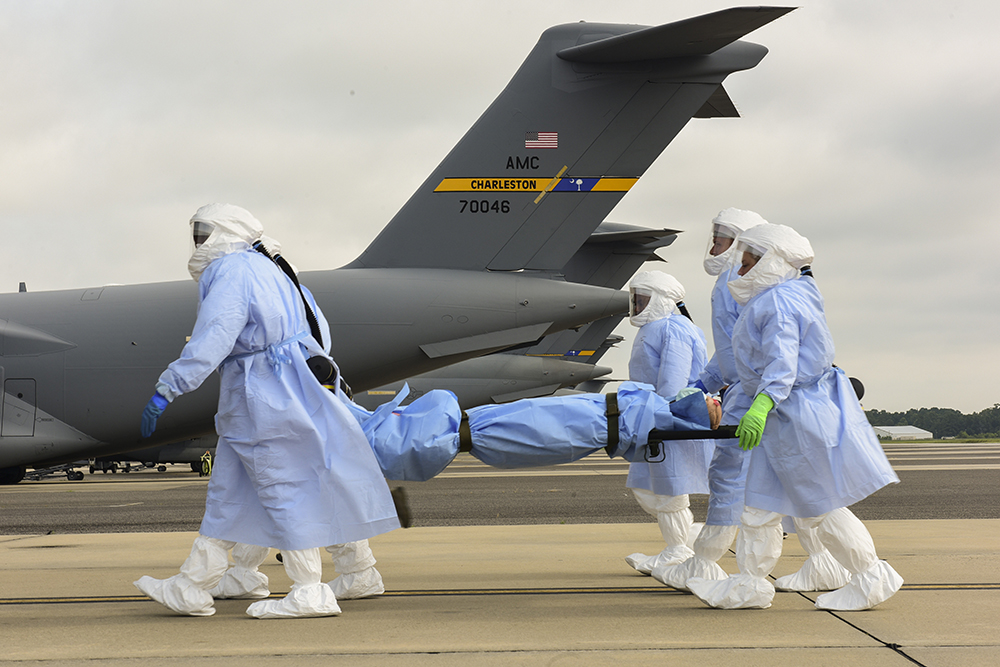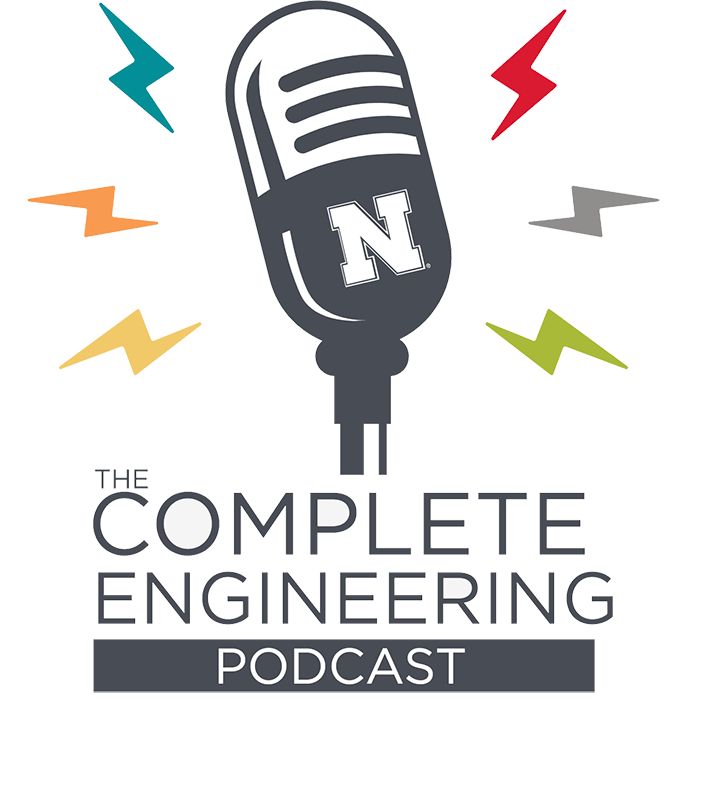Calendar Icon
Mar 31, 2020
Person Bust Icon
By Karl Vogel
![]() RSS
Submit a Story
RSS
Submit a Story

RELATED LINKS
- Listen to the Complete Engineering Podcast
- Read about Air Force's first TIS mission on April 10, 2020

Engineering faculty Terry Stentz and Kelli Herstein have worked with the University of Nebraska Medical Center (UNMC) and its biocontainment unit, especially studying the effects of long missions on U.S. Air Force (USAF) personnel sent to retrieve patients exposed to highly infectious diseases like Ebola, and the performance of the USAF airborne transport isolation system (TIS).
“The main objective for the USAF was to have someone from the outside, like the UNMC biocontainment research team who are experts in biocontainment environments and infectious disease medicine, evaluate the process and TIS design for performance and make suggestions and recommendations for how the equipment and processes could be improved,” said Stentz, associate professor of construction engineering and management.
Both Stentz and Herstein are industrial engineers and occupational health scientists with faculty appointments in the Department of Environmental, Agricultural, and Occupational Health Sciences in UNMC’s College of Public Health. Both have teaching and research experience in human factors, ergonomics and safety, with areas of expertise in work environments like manufacturing health care, hospitals, construction, and other areas.
UNMC has been at the forefront of many recent outbreaks of highly infectious diseases. In 2014, the UNMC biocontainment unit treated patients infected with Ebola and, in February, the biocontainment unit began treating patients infected with COVID-19.
“Transporting highly infectious patients to Omaha or anywhere else they can be treated would be a huge undertaking in a high-stress, short notice, long flight, airborne mission”, Stentz said, “even for a military unit.”
“They go at a moment’s notice. If the State Department picks up the phone and says go pick up so and so and bring them back, that's their mission,” Stentz said. “It's got some security risk and a lot of operational challenges, but they are ready to go 24/7.”
Herstein, associate professor of practice in construction engineering and management, flew an exercise mission with the USAF Air Mobility Command aeromedical evacuation team aboard a C-17 Globemaster in the summer of 2018. They took off from Joint Base Charleston in South Carolina and landed at Offutt Air Force Base near Bellevue to simulate the transfer of highly infectious patients to Omaha Fire and Rescue for transport to the UNMC biocontainment unit. Then they returned to Joint Base Charleston, unloaded simulated patients, and prepared the C-17 for a different mission and the TIS units for decontamination and evaluation.
“You can do these simulations on the ground, but until you go airborne you really don’t have a complete experience of what an actual mission will be like,” said Herstein. “You can anticipate, but until you go airborne in an exercise scenario, it isn’t as real as it should be.”
During the trip, Herstein talked with the pilots and learned how they adapt to long-haul flights and got an understanding of flight crew alertness, decision making and fatigue management.
Plus, Stentz said, dealing with the TIS is an important factor in how medical personnel react and perform on these types of airborne missions. The TIS is designed to be installed, secured and activated inside the aircraft to keep quarantined people isolated from the rest of the plane while still receiving medical care by USAF medical personnel in full PPE. Stentz and Herstein analyzed circadian rhythms, the role of alertness and fatigue in decision-making, ergonomic and biomechanical stressors, flight crew and patient safety, and PPE and TIS integrity, among numerous factors.
Stentz and Herstein also helped the UNMC research team identify and recommend areas of improvement in human-equipment systems, training, and medical crew fatigue performance.
“Everything we did was very well received,” Stentz said. “It confirmed some of what they thought they knew and, I think, we pointed out things that could benefit from continuous improvement, just like any high performance, critical system. In the long run, we think the College of Engineering has a vital role to play in helping to solve military problems, and we want to continue doing research projects like this one.”
Submit a Story


